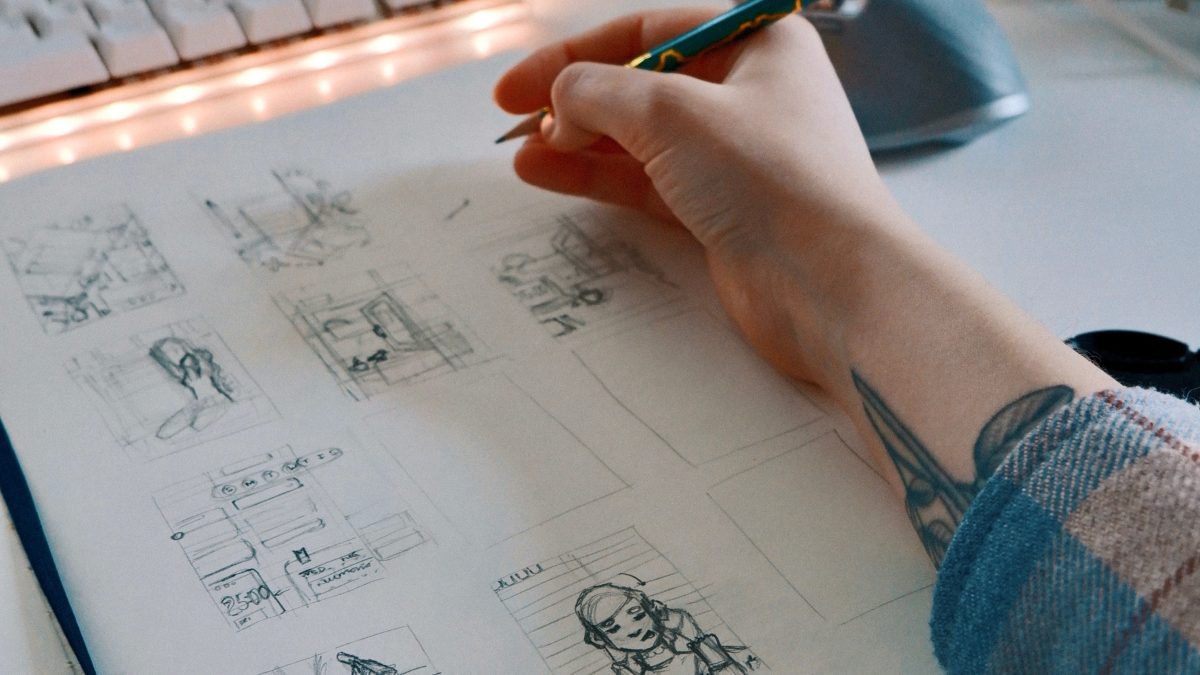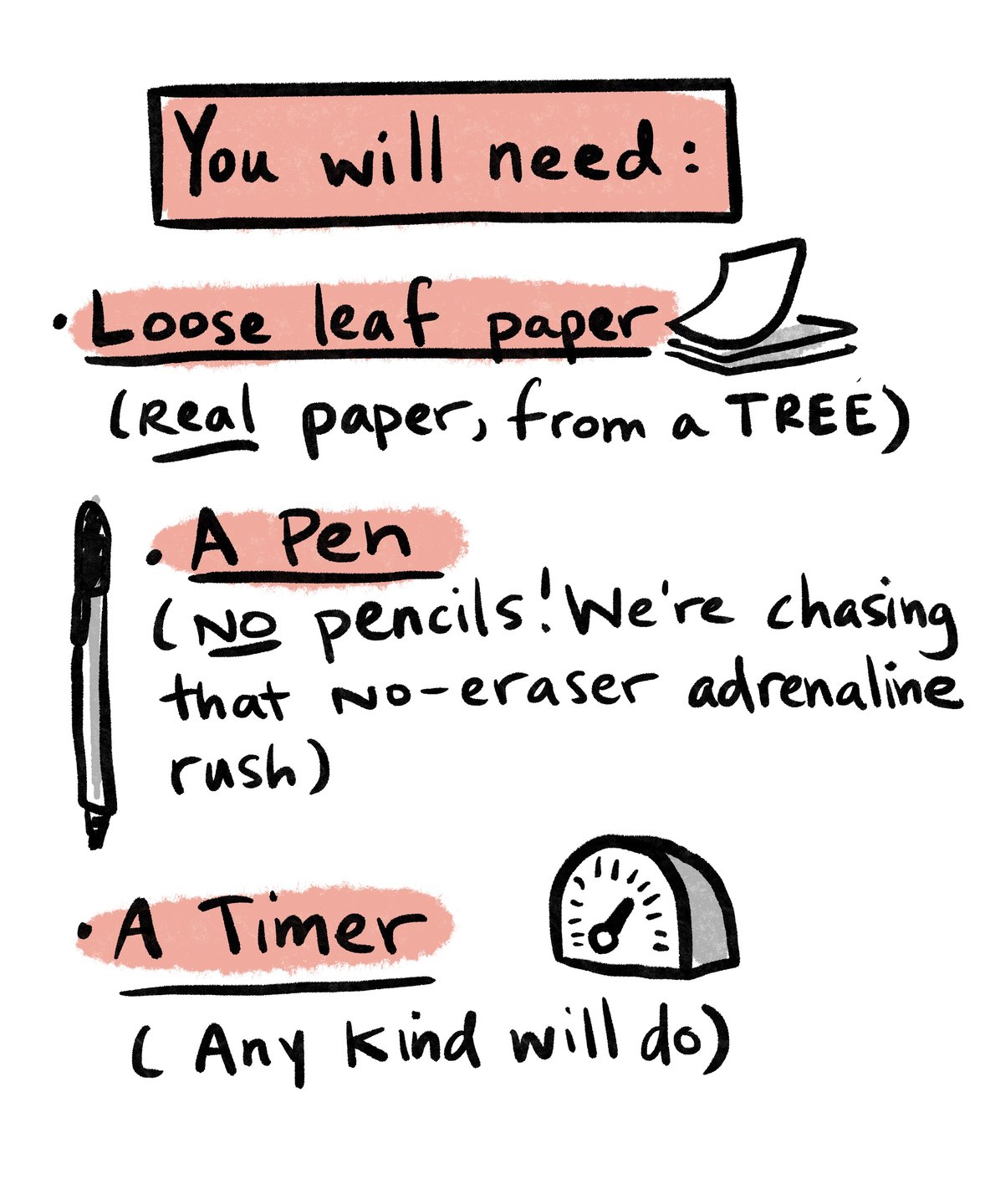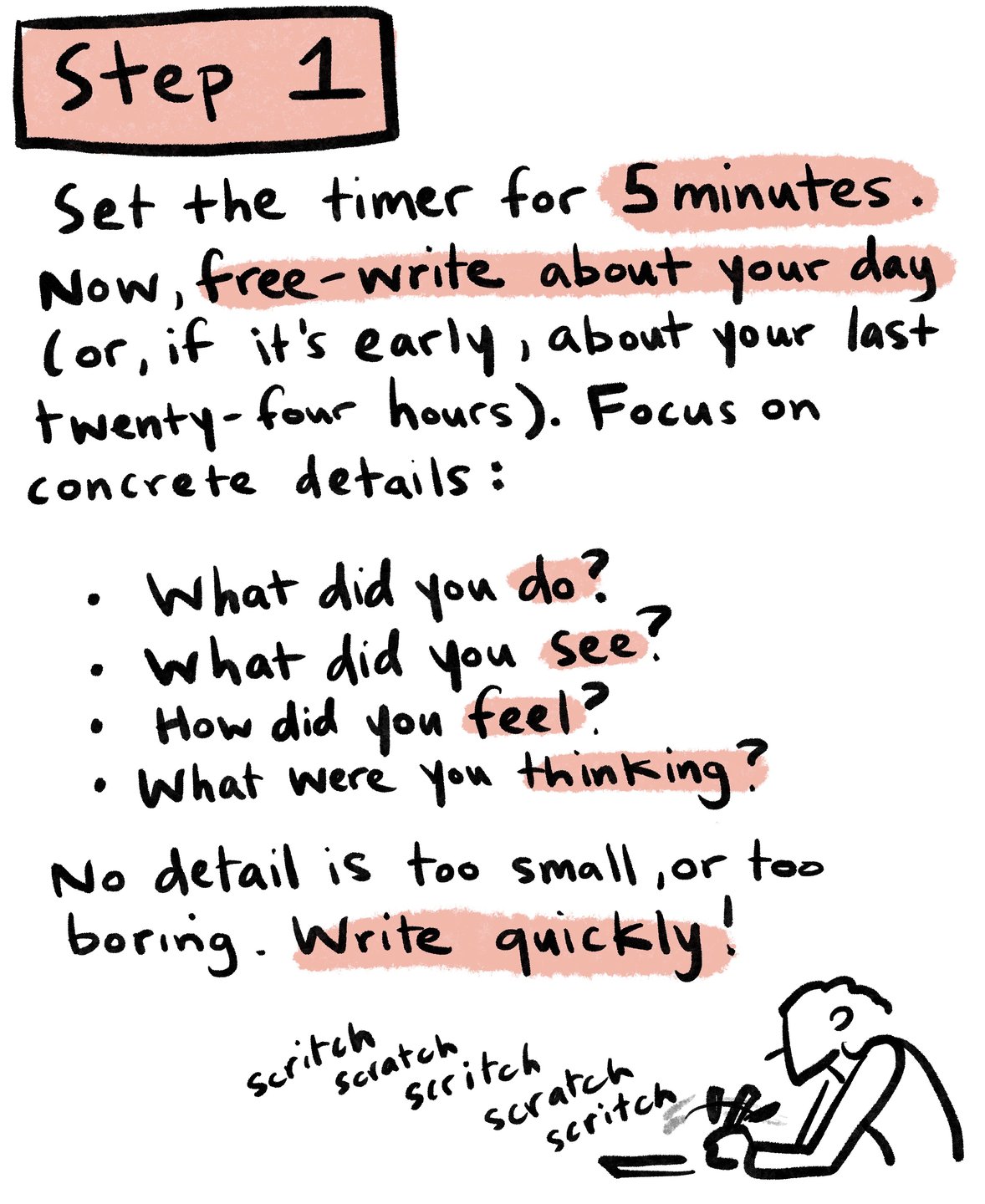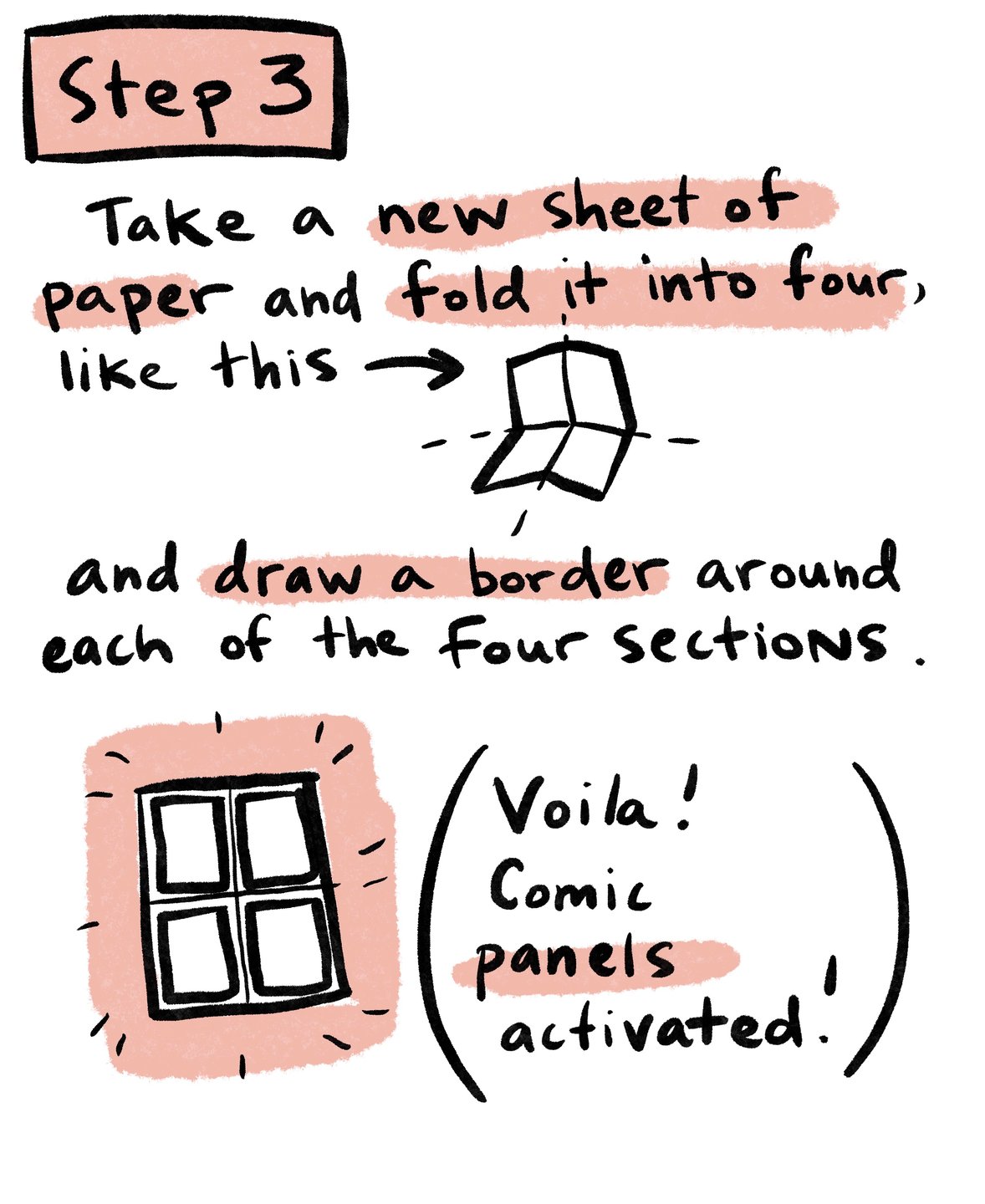Don’t Write Alone Free Write
Make a Comic by Drawing the Little Things
Pick one aspect of your day to expand into a short-form comic.
I love comics. There are many reasons why, but chief among them is the sense of closeness I feel, in reading a comic, to the creator. Because comics are visual, the reading experience is as much about the presentation as it is the content: that is, the mark-making; the layout; the way a face is drawn, or occluded. Even text, in comics, becomes an aesthetic element: is it hand-lettered, or a font? Where is it placed on the page? How does text interact with the image? Reading comics, I get such a sense of subjectivity and individuality from the page, even from just a cursory scan of the work.
Maybe it’s because of this sense of personal connection that I find nonfiction comics especially compelling It’s a powerful sensation, being so fully immersed into another’s perspective. I’ve never worked in the oil sands of Canada, for instance, but through reading Kate Beaton’s graphic memoir, Ducks , I felt the rhythm of her life there: the tedium; the camaraderie and the isolation; the gritty, industrial environment shaping every aspect of culture. In my upcoming course , we’ll be reading an assortment of nonfiction comics with an eye toward craft, and using what we learn to create our own work.
Another reason I love comics is that anyone can make them, regardless of artistic inclination. Good comics, in my opinion, are not measured by virtuosic demonstrations of anatomy, or by how accurate that drawing of a ‘97 Ford station wagon is. I’m devoted to the work of my favorite cartoonists because of their energy and expressivity. If their point of view is exciting and their timing is good, I’ll forgive anything.
If you’re new to comics (and if you’re not!) I hope you’ll give this prompt a try. It’s adapted from the Daily Diary Exercise , created by the incomparable Lynda Barry, and it’s designed to get your pen moving and hone your attention to detail. You’ll be drawing from your own life, picking one aspect of your day to expand into a short-form comic.
This exercise requires a timer, and this is critical. Time constraints are a great way to get around an inner critic. You might hate the way you draw hands, but if you only have three seconds, your instincts will take over. Working in this way leaves room for us to surprise ourselves, and to access the wonder of making. If you’re unsure about how to construct a comic, don’t worry: there is no right or wrong here, and you know more than you think you do. This prompt is about observation, joy, and play. Everything else can come later.
I hope this activity leaves you feeling creatively enlivened. Personally, this is the practice I return to—making quick, short-form autobio comics—whenever I need to reconnect with my voice. It’s easy for me to get wrapped up in the drive to create meaningful, important work . . . but when that ambition pressurizes the making to the point of paralysis, it’s not useful anymore. Exercises like this one have been vital for me in developing (what I hope will be!) a lifelong practice of creativity, because they remind me of what lies, I believe, at the heart of comics: that drawing is fun, and that the page can be a place of curiosity, connection, and discovery.
*
If you enjoyed this prompt, don’t miss the opportunity to sign up for Sofia’s upcoming workshop for c reating graphic nonfiction narratives! Class begins in March.





